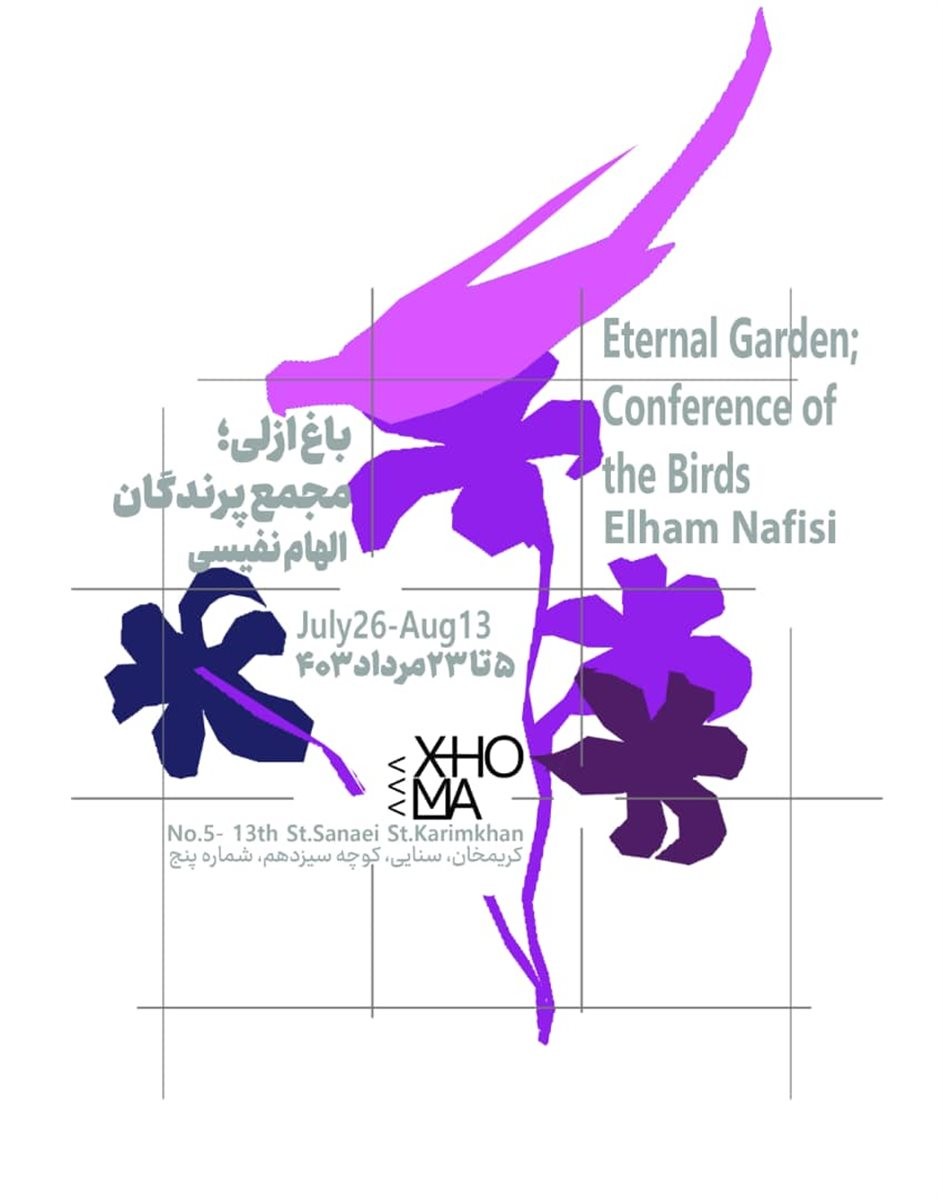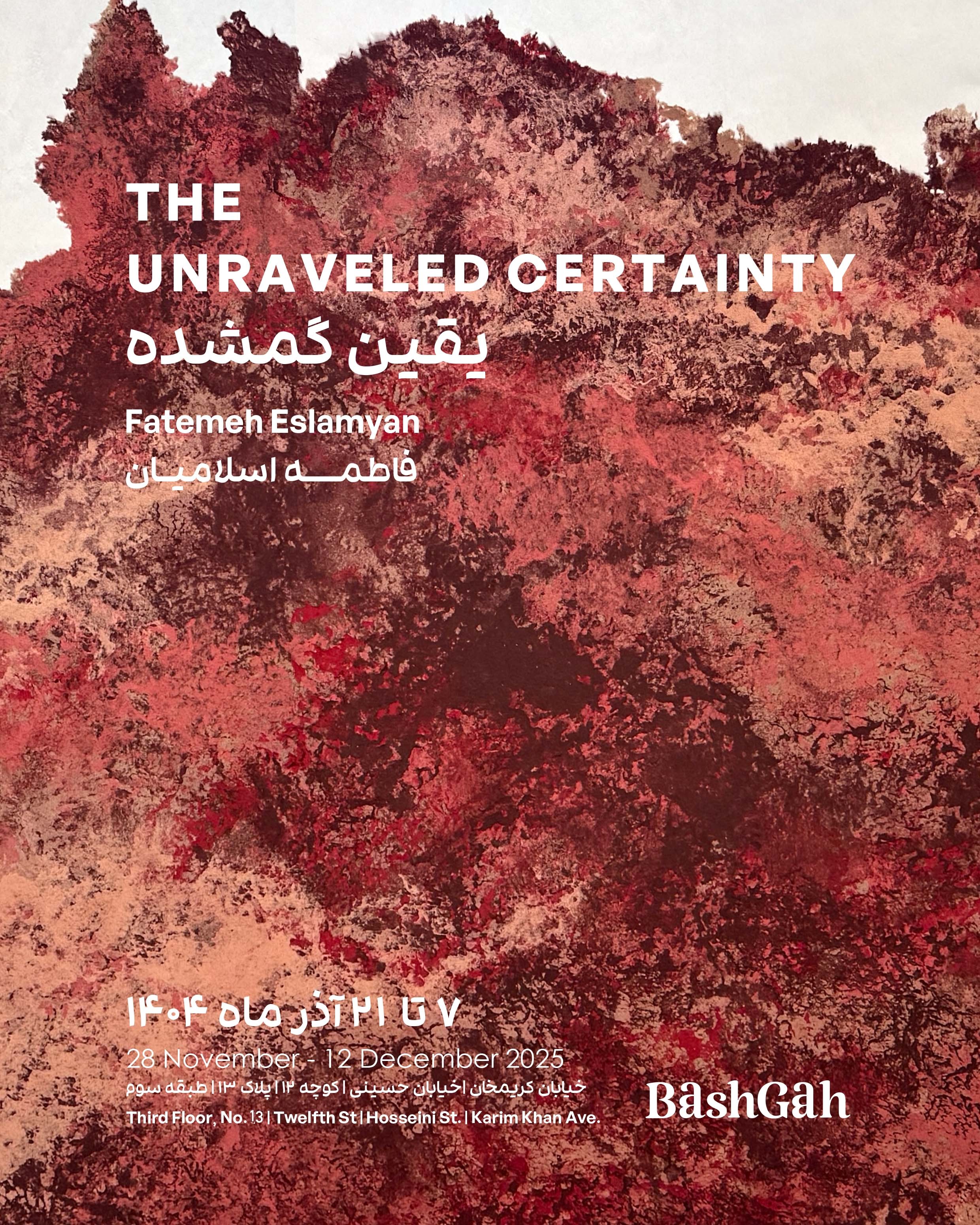Tehran,
No. 5, 13th St., Sanaei St., Karimkhan St., Tehran
26 July 2024 - 13 August 2024
They say that Shah Jahan built a garden of heavenly birds so that Mumtaz Mahal or Arjumand Banu Begum could experience walking in Eden while on earth; the Taj Mahal was built in her absence. The gardens of Elham Nafisi are constructed within the grand scope of such a legacy. Nafisi recreates the works of later periods through the perspective of a woman like Arjumand Banu, envisioning a divine world. It is through this vision that her feminist approach to painting is revealed. She believes that a garden is a place where one can create a personal paradise. Even her current references to architecture are metaphorical gardens. Over the past four years, building on her previous works, she has expanded her imagined gardens, and the more she has observed the harsh realities of Middle Eastern life, the more she has sought refuge in her gardens. In fact, the hoopoe, the journey of the birds, and the conference of the birds are pretexts for telling an imaginary narrative of today›s perilous history.
One might ask whether it is possible and feasible to depict the current state in painting. Nafisi, by compressing a multitude of birds, alludes to Attar's convergence. She creates a time-referential image from the collective thinking mechanism of the Mu’tazila doctrine, as if extracting the eternal dimension of an Eastern practical logic from Pandora’s box. Painting becomes merely an excuse to see, just as paradise is a metaphor for happiness.
In this four-year process, she has also been searching for answers to questions within the art of painting itself, which is reflected in her desire to use the diverse color palettes of Persian painting and to explore the space of traditional Persian painting within new subjects. She has also examined the works of artists with similar questions, from Hockney and Kiki Smith to Nordström and Armajani, as well as earlier artists like Mansur and Jalayer, and even artists from ancient Egypt to Sassanid Iran. This has led to experiments, such as the study of geometric spaces that appear as architectural spaces and the emphasis on the presence of sacred trees like figs, vines, and pomegranate trees to provide refuge for the birds. She says, «During these four years, I have painted almost every day; even on the hardest days when there was no glimmer of hope, and ultimately, all those anxieties disappeared under the thin layers of color and the grooves of colorful feathers and the veins of fig and vine leaves, and this is the miracle of painting.»
Now, in the imagined realm of her gardens, she gives us the opportunity to minimally recover a distant dream.
One might ask whether it is possible and feasible to depict the current state in painting. Nafisi, by compressing a multitude of birds, alludes to Attar's convergence. She creates a time-referential image from the collective thinking mechanism of the Mu’tazila doctrine, as if extracting the eternal dimension of an Eastern practical logic from Pandora’s box. Painting becomes merely an excuse to see, just as paradise is a metaphor for happiness.
In this four-year process, she has also been searching for answers to questions within the art of painting itself, which is reflected in her desire to use the diverse color palettes of Persian painting and to explore the space of traditional Persian painting within new subjects. She has also examined the works of artists with similar questions, from Hockney and Kiki Smith to Nordström and Armajani, as well as earlier artists like Mansur and Jalayer, and even artists from ancient Egypt to Sassanid Iran. This has led to experiments, such as the study of geometric spaces that appear as architectural spaces and the emphasis on the presence of sacred trees like figs, vines, and pomegranate trees to provide refuge for the birds. She says, «During these four years, I have painted almost every day; even on the hardest days when there was no glimmer of hope, and ultimately, all those anxieties disappeared under the thin layers of color and the grooves of colorful feathers and the veins of fig and vine leaves, and this is the miracle of painting.»
Now, in the imagined realm of her gardens, she gives us the opportunity to minimally recover a distant dream.

Artists
Available Nearby Exhibitions
The Unraveled Certainty
Tehran
28 November 2025 - 12 December 2025
580 Nanometers / Yellow
Tehran
28 November 2025 - 8 December 2025

